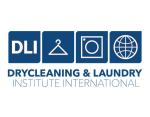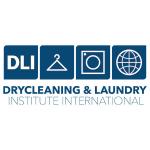NEW YORK — Safety in drycleaning operations extends beyond regulatory compliance — it represents a moral obligation of every business owner to protect their employees, according to Craig Stromgren, head of safety and loss control at World Insurance Associates.
“Every owner, manager or supervisor within an organization has a moral obligation to protect their people, first and foremost,” Stromgren says during a recent National Cleaners Association (NCA) webinar.
Over his 30-year career in safety consulting, he’s investigated several workplace fatalities, which he says were often the result of shortcuts, rushed work, or companies ignoring safety precautions.
Understanding Your Safety Gaps
The foundation of effective safety management begins with conducting a gap analysis — comparing current safety performance against desired or expected performance. Stromgren emphasizes that even the best companies have gaps in their safety programs.
“One of the things that I would encourage you to do is come up with five things that you need to work on and prioritize,” he says, noting that trying to address too many issues simultaneously often proves ineffective.
Common concerns from drycleaning operators, Stromgren has found, include delivery driver safety, steam burns, and heat exposure. These represent typical risks in the industry that require specific attention and preventive measures.
The Cost of Reactive Safety Approaches
Stromgren believes that owners must understand the difference between proactive and reactive safety management. Reactive management — when companies rely on luck rather than systematic safety measures — eventually experiences incidents. “Luck is the result of poor design,” he says. “Sooner or later, your luck is going to run out.”
The statistics support being proactive. According to Bureau of Labor Statistics data, Stromgren says, approximately 5,300 people died in workplace accidents in 2023, or roughly 20 employees per day in the United States. About 30-35% of these fatalities involved motor vehicle accidents, which makes driver safety particularly relevant for drycleaning operations with delivery services.
Building a Safety Culture
Putting a safety management culture in place requires creating an atmosphere where employees feel supported in identifying and reporting unsafe conditions. Stromgren emphasizes the importance of the “see something, say something” principle.
“How many times does somebody walk by something that’s wrong and they don’t say anything?” he asks. When management ignores safety violations — such as employees not wearing required personal protective equipment — it sends a message that such behavior is acceptable.
Stromgren uses a “safety pyramid” concept to illustrate how small incidents can escalate: 300,000 unsafe acts lead to 600 near misses, which result in 30 minor accidents, 10 serious injuries and, ultimately, one fatality. Addressing unsafe behaviors and conditions at the base level prevents progression up the pyramid.
Sometimes, building a safety culture can lead to difficult conversations with team members who don’t want to follow guidelines, Stromgren says.
“I’ve seen it happen time and time again where an employee who should have been let go sticks around until they hurt themselves,” he says. “So, this is a bit of a brash statement, but would you rather let somebody kill themselves or fire them? You need to hold people accountable.”
Essential OSHA Compliance Programs
Drycleaning operations must comply with various OSHA standards, with some programs being more commonly cited than others. OSHA programs that are particularly relevant to drycleaning operations include:
- Hazard Communication: Required for all businesses using chemicals, this program ensures employees understand chemical hazards through proper labeling and safety data sheets.
- Lockout/Tagout: Establishes procedures for safely shutting down equipment during maintenance.
- Machine Guarding: Addresses safety measures for equipment with moving parts.
Stromgren notes that hazard communication represents “one of the easiest areas for compliance” and should be implemented by every drycleaning operation.
Training and Documentation
Safety training can offer many benefits beyond compliance, Stromgren says, including increased awareness, improved productivity, cost savings, and enhanced employee retention.
He also emphasizes the critical importance of documenting all safety training: “If we don’t document it, it’s not done.”
He advocates for monthly or even weekly safety training sessions to build a safety culture and keep safety topics top of mind. Regular training also helps establish the peer accountability that makes safety everyone’s responsibility.
Managing Vehicle Safety
For drycleaning operations with delivery services, vehicle safety represents a significant exposure. Stromgren recommends telematics systems in vehicles to monitor driving behavior. These systems track factors such as hard braking, quick starts and harsh cornering.
These systems provide objective data on driver performance, with scores typically going toward 100 (higher is better) for safe driving. In one example Stromgren shares, a driver’s safety scores improved dramatically because of telematics.
“He was in the 30s,” he says, “and then his scores went straight up once he knew he was being monitored.”
Added vehicle-safety measures include annual motor vehicle record checks and continuous monitoring services that alert employers to violations like DUI arrests that could affect commercial driving assignments.
The Financial Impact of Safety
While protecting employees is the primary goal of effective safety programs and procedures, Stromgren says, owners can also see financial benefits. Workers’ compensation claims, for instance, directly affect the owner’s insurance premiums.
The insurance industry uses an “experience modification factor,” Stromgren says, based on a company’s claims history compared to similar businesses. A factor above 1.0 means paying more than the baseline rate, while factors below 1.0 result in savings. Stromgren says he has worked with companies that have reduced their experience mods from 1.56 to 0.83 through improved safety practices, resulting in significant premium savings.
Slips, trips and falls account for 25-30% of workers’ compensation claims across industries, often resulting in expensive knee, shoulder and back injuries. Good housekeeping — keeping work areas clean and free of hazards — addresses many of these incidents.
“So, don’t think I don’t care about people,” he says. “It’s just that, from a dollars-and-cents perspective, safety and risk management can save you money, as well.”
Implementing Change
Stromgren understands that change can sometimes be difficult, but he believes it is necessary for improvement.
“If you do what you always do, you’re going to get what you always get,” he says.
He’s found that when implementing new safety procedures, it typically requires about four to six weeks for employees to adapt. The key lies in commitment to, and consistent enforcement of, safety standards by leadership.
For drycleaning operations serious about improving safety performance, the path forward involves honest gap analysis, comprehensive training programs and consistent enforcement of standards.
“At the end of the day, what do we want?” Stromgren asks. “We want everybody to go home to their families.”
Have a question or comment? E-mail our editor Dave Davis at [email protected].






































































